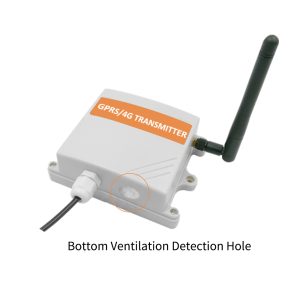-
Principle of gas detector
- Gas detectors are essential devices used to detect and monitor the presence of hazardous gases in various environments. They play a crucial role in ensuring safety in industries such as oil and gas, chemical plants, mining, and firefighti……
- Chat Online
-
Description
Gas detectors are essential devices used to detect and monitor the presence of hazardous gases in various environments. They play a crucial role in ensuring safety in industries such as oil and gas, chemical plants, mining, and firefighting. This article will delve into the principles underlying gas detectors, the different types of gas detection technologies, and their applications.

Principles of Operation:
Gas detectors operate based on various principles to detect and measure the concentration of gases. The most common principles include:
Catalytic Combustion:
This principle is used for detecting combustible gases. The detector contains a catalytic bead made of materials that promote combustion. When a combustible gas comes into contact with the catalytic bead, it undergoes a chemical reaction and produces heat. The increase in temperature is detected by the sensor, triggering an alarm.
Electrochemical Sensors:
Electrochemical gas sensors utilize electrodes and electrolytes to measure gas concentrations. The target gas undergoes a chemical reaction at the electrode surface, resulting in a current flow that is proportional to the gas concentration. Electrochemical sensors are commonly used for detecting toxic gases such as carbon monoxide, hydrogen sulfide, and chlorine.
Infrared Absorption:
Infrared gas detectors use the principle of absorption of infrared radiation by specific gas molecules. Each gas has a unique absorption spectrum in the infrared range. The detector emits infrared radiation, and the gas absorbs specific wavelengths depending on its composition. The decrease in the intensity of the transmitted radiation is measured and used to determine the gas concentration.
Photoionization Detection (PID):
PID detectors employ high-energy ultraviolet (UV) light to ionize gas molecules. When the gas molecules are ionized, they produce positively charged ions and free electrons. The current generated by these ions is measured and used to determine the gas concentration. PID detectors are widely used for volatile organic compound (VOC) detection.
Types of Gas Detectors:
Gas detectors are available in various types, with each type suitable for different applications and gas detection needs. Some commonly used types include:
Fixed Gas Detectors:
These detectors are permanently installed in specific locations to continuously monitor gas levels. They are commonly used in industrial settings to provide early warning of gas leaks and ensure worker safety.

Portable Gas Detectors:
Portable detectors are compact and battery-powered, making them ideal for on-the-go gas detection. They are commonly used by firefighters, emergency response teams, and workers in confined spaces.
Single Gas Detectors:
These detectors are designed to detect and monitor a single specific gas. They are commonly used for monitoring gases such as carbon monoxide, hydrogen sulfide, or oxygen levels in the air.
Multi-Gas Detectors:
Multi-gas detectors are capable of simultaneously monitoring multiple gases. They are versatile and commonly used in industries where workers may encounter various hazardous gases.
Applications:
Gas detectors have a wide range of applications across multiple industries:
Industrial Safety:
Gas detectors are crucial for the safety of workers in industries such as oil and gas, chemical plants, and mining. They help monitor the presence of combustible gases, toxic gases, and oxygen deficiency to prevent accidents and ensure a safe working environment.
Environmental Monitoring:
Gas detectors play a vital role in monitoring air quality and detecting harmful gases in the environment. They are used in environmental studies, pollution control efforts, and detecting gas leaks from landfills or chemical spills.
Firefighting:
Gas detectors are used by firefighters to detect flammable gases and toxic fumes during fire incidents. This information helps them assess the risk and take appropriate measures to extinguish the fire safely.
Indoor Air Quality:
Gas detectors can be utilized in residential, commercial, and public buildings to monitor indoor air quality and detect the presence of carbon monoxide, natural gas, or volatile organic compounds.
Conclusion:
Gas detectors are indispensable devices in various industries, ensuring the safety of workers, protecting the environment, and preventing accidents. By utilizing principles such as catalytic combustion, electrochemical sensors, infrared absorption, and photoionization detection, gas detectors provide accurate and reliable measurements of gas concentrations. With ongoing advancements in technology, gas detectors continue to improve, becoming more sensitive, compact, and versatile, contributing to enhanced safety and environmental protection in countless applications.
-
Recommend:
-
-
Gas detectors are crucial devices used in various industrie…
-
How do gas detectors ensure industrial safety?
Gas detectors play a crucial role in ensuring the safety of…
-
How Gas Sensors Help Combat Air Pollution?
Air pollution is a pressing global issue that poses signifi…
-
How can gas sensors be used in air quality monitoring?
Air pollution is a significant global concern that affects …
-
 : +86 155 8830 2704
: +86 155 8830 2704 : jxdziot@gmail.com
: jxdziot@gmail.com
